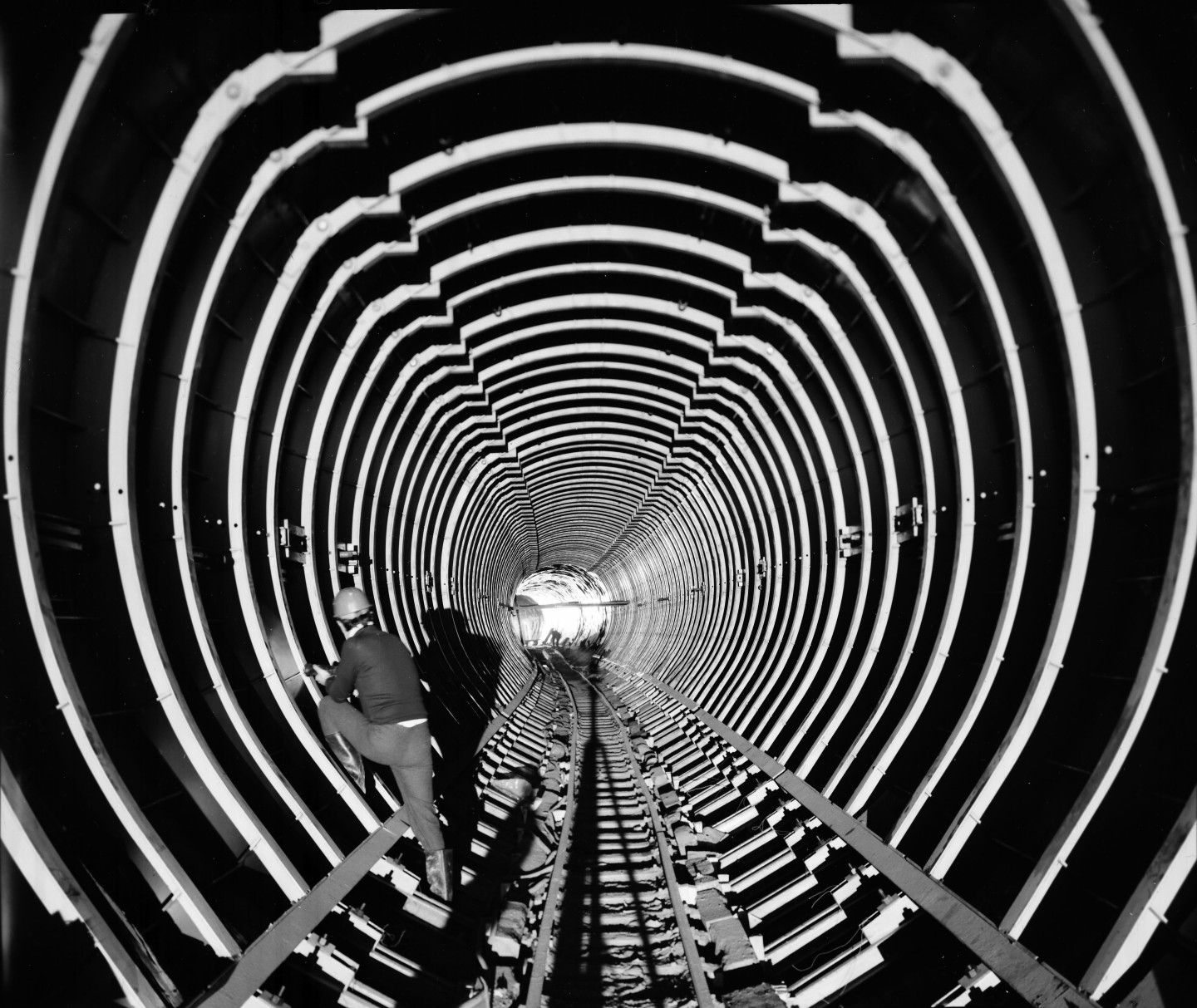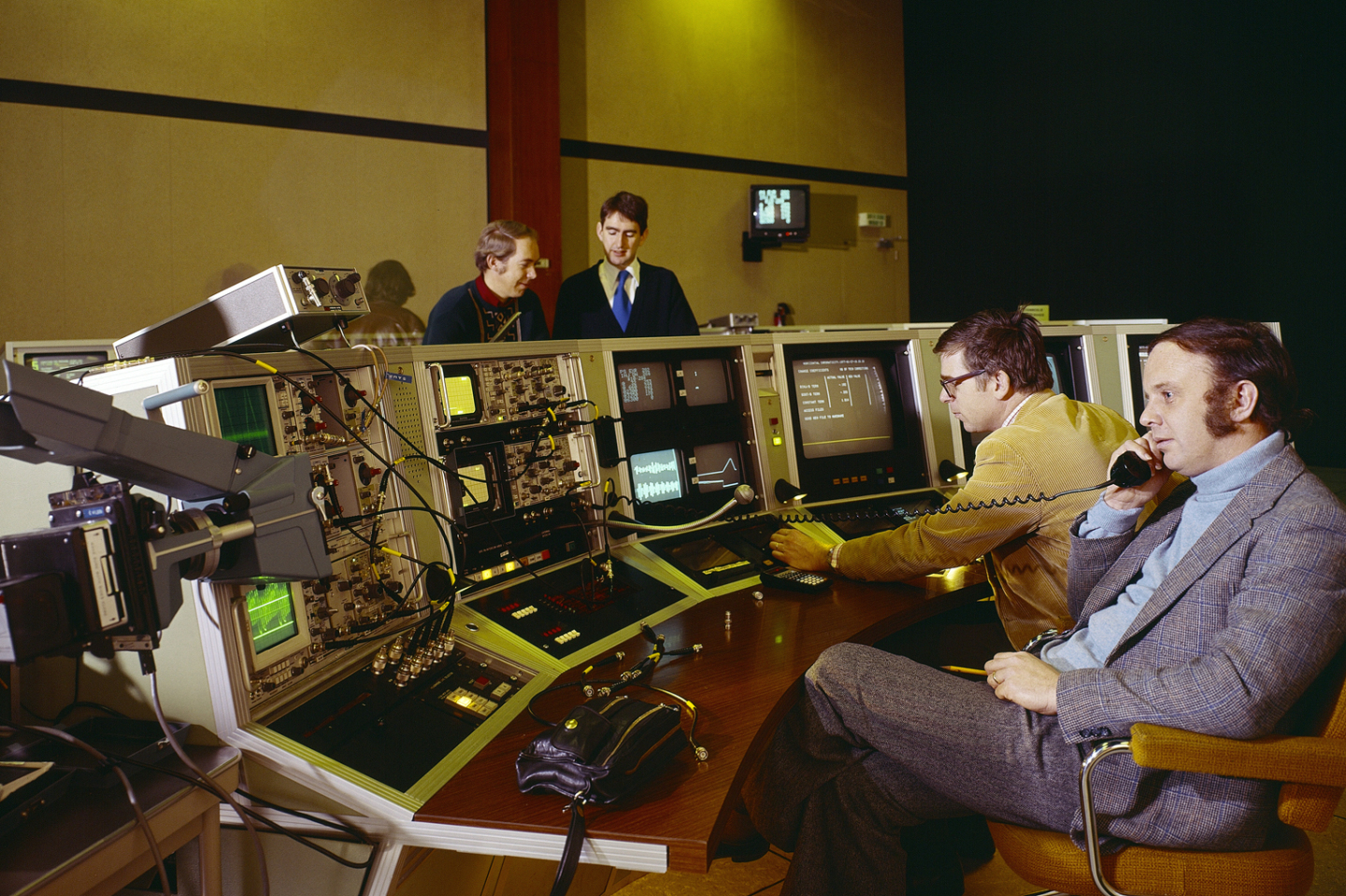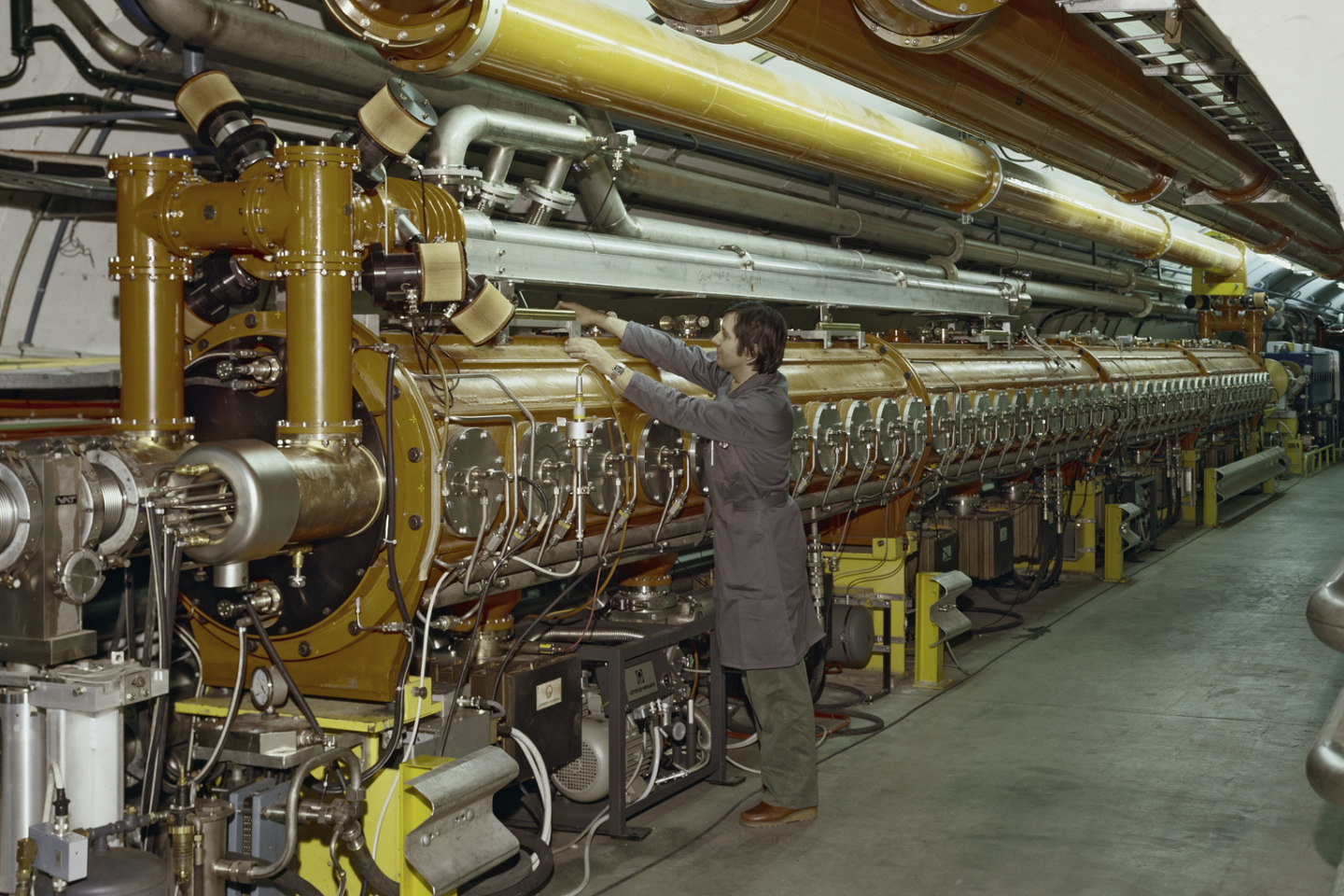CERN70: A two-stage rocket
27 June 2024 · Voir en français
Part 12 of the CERN70 feature series. Find out more: cern70.cern
Ted Wilson was involved in the design of the Super Proton Synchrotron (SPS) and played a leading role in its commissioning.

In the early 1960s, when the Proton Synchrotron (PS) had just come into service, the scientific community was already thinking about a machine ten times more powerful. But a new accelerator could be built elsewhere, with a new laboratory. The project soon found itself the object of a diplomatic and financial deadlock. John Adams, the project leader, proposed a less expensive and more powerful alternative. Similar to a multi-stage rocket, he suggested using the PS as the injector for the new accelerator, to achieve higher energy at lower cost.
Thanks to this new impetus, the programme was approved in 1971. A few months later, work began to dig a 7-kilometre tunnel 40 metres underground, straddling the French-Swiss border, and to build a new laboratory in France on a 412-hectare site. While the construction work for the Super Proton Synchrotron (SPS) was under way, CERN was divided into two separate laboratories, each with its own administrative structure and its own Director-General. The two were brought back together as a single laboratory in 1976.
The accelerator ring consisted of more than a thousand magnets, which saw the commissioning of an ultra-modern control system for its time: 24 small control computers communicated via a high-speed transmission system between the tunnel and the control room. The computers were equipped with the first capacitive touch screens, a technology that would be used in smartphones many years later.
On 17 June 1976, the day of the CERN Council meeting, the protons made their first turns around the ring at an energy of 300 GeV. Only a few hours later, the teams pushed the machine to 400 GeV, 100 GeV higher than the energy initially planned.
The programme of experiments got under way early the following year. The SPS supplied two experimental zones: the West Experimental Area on the Meyrin site and the new North Experimental Area on the Prévessin site. In 1981, the SPS was converted into a proton–antiproton collider, before becoming the second stage of an even larger “rocket” in 1989, the Large Electron Proton collider (LEP), 27 kilometres in circumference.
Recollections
I was a young CERN fellow, one of the tiny team of three working on the project, and I was more than surprised to be asked to redesign the entire machine to make it more compact and cheaper.
Ted Wilson

Ted Wilson worked on the SPS design from 1967 and played a leading role in the commissioning of the Super Proton Synchrotron. He was involved in turning the SPS into a Storage Ring before leaving to join the running in of the Antiproton Accumulator in 1981. Subsequently he was head of the CERN Accelerator School for 12 years.
“As the Intersecting Storage Rings was nearing completion at the end of the 1960s, Europe’s next accelerator, a big synchrotron, was still a paper study. In the US, Fermilab’s new machine was almost finished, built in half the time and for what seemed like half the budget. Several years had passed with no agreement on where to locate the new European accelerator and finally CERN Council could wait no longer. John Adams was invited back to get things moving.
I was a young CERN fellow, one of the tiny team of three working on the project, and I was more than surprised to be asked to redesign the entire machine to make it more compact and cheaper. Although we would show that we were well up with the latest technologies, Council would not be persuaded without detailed cost studies.
Then came John Adams’s masterstroke – the logjam over the site could be removed if there was a convincing reason for choosing one particular site. We were studying an option for a 400 GeV ring, which could fit at CERN, use existing machines as pre-accelerating injectors, and re-use some empty buildings as experimental areas. Building the machine at CERN would surely be cheaper than at any green-field site.
This “Project B” was a secret known only to one or two of us while John Adams toured Europe and, with painstaking diplomacy, disarmed national ambitions to host the new accelerator. My contribution to maintaining secrecy was to break a leg skiing and to spend six weeks under traction far from a phone or computer. When the time was ripe, a rather impatient John Adams came to my bedside to tell me to get well soon. It was time to remove the wraps on the new machine, which was to become known as the SPS.

A pivotal moment for John Adams, who was from the United Kingdom, was his encounter with a certain Margaret Thatcher, visiting CERN as Minister of Science and Education. I have rarely seen John as excited as when he rushed along the corridor with the news: “Margaret has just phoned to tell me that the Cabinet has agreed the UK should rejoin the Project. Isn’t that nice of her?”
In 1976 the SPS came smoothly on-line as planned. Although five years behind its American rival, it was soon to be turned into a Nobel Prize winning facility, colliding protons against antiprotons, thanks to the brilliance of Carlo Rubbia and Simon van der Meer.”
----
This interview is adapted from the 2004 book “Infinitely CERN”, published to celebrate CERN’s 50th anniversary. Ted Wilson died in 2016 at the age of 78.
